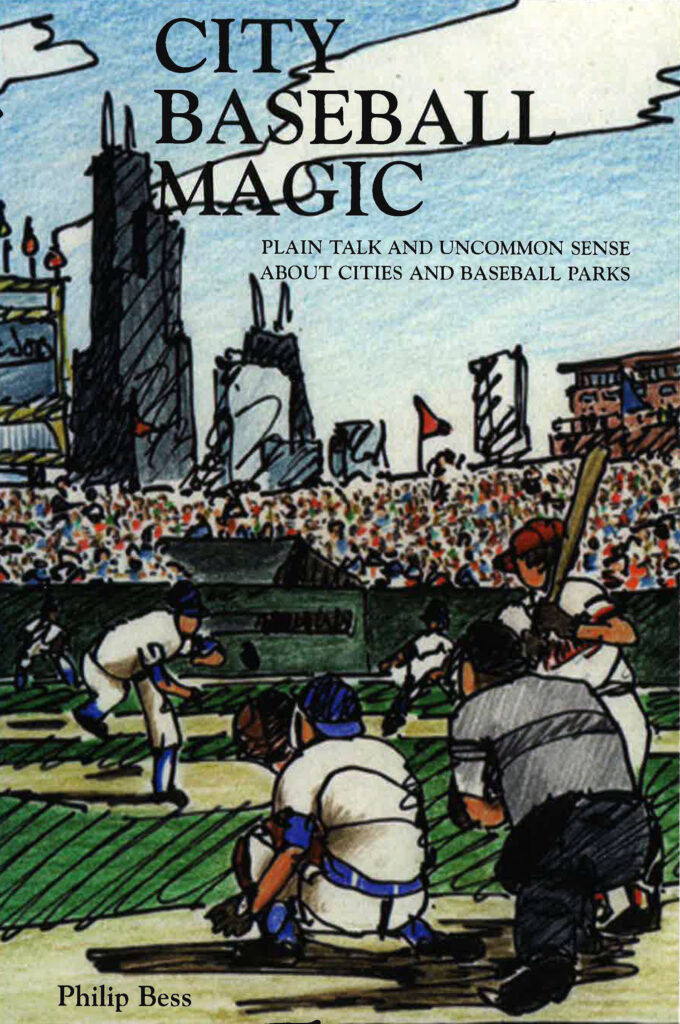City Baseball Magic: Plain Talk and Uncommon Sense About Cities and Baseball Parks
by Philip Bess
Philip Bess’s City Baseball Magic is a polemic on behalf of the traditional urban baseball park, and an exercise in “pragmatic idealism.” Baseball stadiums of today improve upon their post-suburban-doughnut predecessors, but remain outrageously expensive and fail to provide either the intimacy or community of the classic neighborhood ballparks of the early 1900’s. A drain on taxpayers, they yield worse seating arrangements for the average fan in the upper deck, result in huge ticket price increases, and tend to destroy the physical fabric and spatial character of cities. Bess contends that most of these liabilities can be ameliorated by once again understanding the baseball park as an urban building subject to the physical constraints of urban networks of streets and blocks. To demonstrate this thesis, Bess offers his readers Armour Field, a proposal for neighborhood ballpark design originally conceived in the mid-1980’s and presented as an alternative to the new stadium that the Chicago White Sox were determined to have built to replace the venerable Comiskey Park on Chicago’s south side. Its argument still relevant today, City Baseball Magic addresses social, cultural, and economic issues, as well as issues of baseball and urban aesthetics, demonstrating the tangible and intangible superiority of traditional neighborhood ballparks over modern stadiums. Architecture critic Paul Goldberger calls City Baseball Magic “an invaluable source for all who are interested in the points of intersection between baseball and the American city.”
What the critics say about City Baseball Magic:
Bess’s thin but incisive…book…has become a cult classic among those who want to do more than just grumble about eating $5 tube steaks in the nosebleed sections of new $500 million “baseball entertainment complexes.” In this book, Bess details how huge stadiums have torn the fabric of urban neighborhoods, distanced fans from the game they love, and fostered the inflationary spiral that has enabled greed to permeate baseball…. With a new preface its only update, this year’s 10th anniversary reprint…feels as fresh and relevant as ever.
–Britt Robson, Utne Reader
Bess approaches baseball park design from the perspective of a committed urbanist and baseball fan…. He argues convincingly that the issues that surround stadium design are important to everyone, and are the same issues that confront cities as a whole: suburbanization, the dominance of the automobile, neglect of central cities and local neighborhoods, and architectural standardization.
–Kevin Fry, AIA Memo
